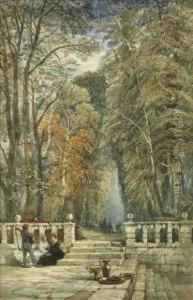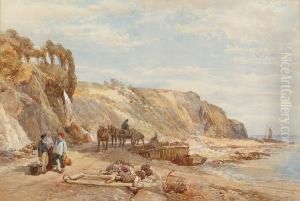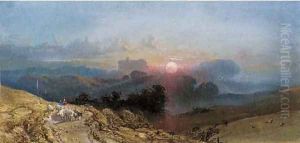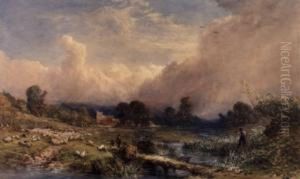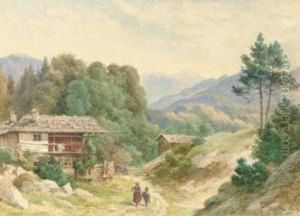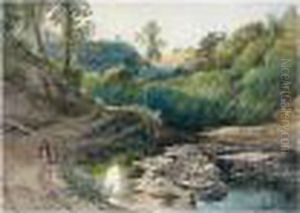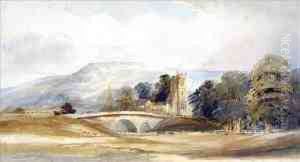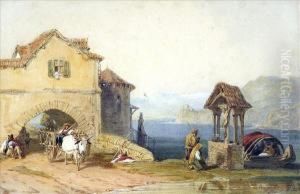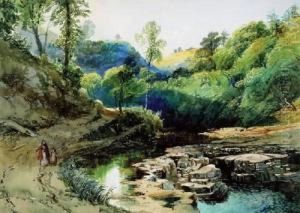William Collingwood Smith Paintings
William Collingwood Smith was a renowned British watercolour painter born in 1815 in Greenwich, London. His artistic journey began early in life, and he was known for his exceptional skills in capturing the natural beauty of landscapes. Smith's paintings often depicted the picturesque scenery of the British countryside, and he had a particular talent for rendering water, with its reflections and movements, which became a signature element of his work.
Smith became an active member of the New Watercolour Society, which later became the Royal Institute of Painters in Water Colours, and he served as its president from 1871 to 1887. His contributions to the field of watercolour painting were significant during a period when the medium was gaining popularity and recognition as a legitimate form of fine art in the Victorian era.
Throughout his career, Smith exhibited his works at various prestigious galleries, including the Royal Academy and the Society of British Artists. His paintings were well received, and he earned the admiration and respect of both critics and the public. William Collingwood Smith was not only a painter but also a teacher, imparting his knowledge and passion for watercolour to a new generation of artists.
Smith's legacy is preserved through his paintings, which continue to be admired for their lively and accurate representation of the English landscape. His contributions to the art of watercolour have inspired many artists who followed in his footsteps. William Collingwood Smith passed away in 1887, leaving behind a rich body of work that still resonates with art enthusiasts and collectors today.





